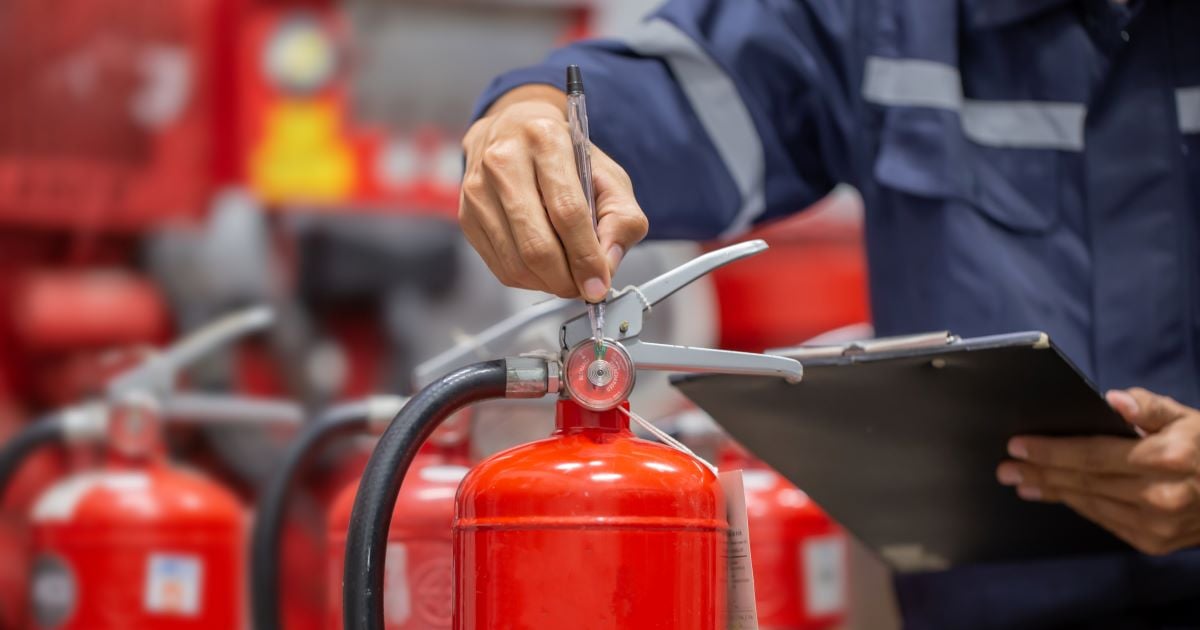The protection of fire is essential for all Sydney business. It’s not just an essential legal requirement however, it’s also a method of keeping personnel, customers, and even property secured. Fires can result in massive losses within minutes. With proper safety measures in place, a lot of these risks can be avoided or minimized. Fire inspections, routine testing and tagging of electrical systems and complying with CFSP rules all work to create a safer environment and ensure that businesses are in compliance to local ordinances as well as Building Code of Australia (BCA) standards.

The reason Fire Inspections are the foundation of Safety
Fire Inspections are the first line of defense against potential hazards. Inspections are conducted to ensure that all the components of the fire protection system in the building are in good working order and up-to-date. In Sydney all businesses must conduct inspections every six to twelve months, based on the nature of the building and the council’s regulations. The inspections can cover everything from sprinklers to fire alarm systems to smoke detectors, fire hydrants and extinguishers.
Inspections are important because they can detect concealed issues before they cause danger. A small fault in a fire hydrant or an obstruction in a smoke detector might appear insignificant at first but, in an emergency, such faults can result in the loss of lives. Regular inspections of fire hazards are a proactive way for business owners to not only ensure they meet their compliance obligations and safeguard themselves from unforeseen disasters.
Testing and Tagging For Electrical Safety: Addressing Hidden Safety
Electrical systems are among the most common causes of workplace fires which is the reason testing and tagging should always be part of a fire safety program. The process involves examining the electrical equipment to ensure that it’s safe and functional and compliant. This is after which you attach a clear tag that indicates that the product has passed inspection. This is a rule that is often not simple to fulfill. For many companies this is a measure to guard against possible risks.
Unchecked, worn-out or old cables, appliances with faults, and outdated wiring can quickly turn into dangers to fire. Through conducting regular tests and tagging, companies reduce the possibility of electrical issues that can cause fires. Employees are also assured that the work environment is secure. This helps create a feeling of trust and confidence within the workplace. Combined with fire inspections and testing, this extensive security plan minimizes risks from a variety of angles.
The Role of CFSP in ensuring Compliance and Certification
In New South Wales only a Competent Fire Safety practitioner (CFSP) can be accredit or sign critical fire safety documents, such as the annual declarations of fire safety. Introduction of CFSP certification has improved the standards for fire safety by ensuring that only qualified professionals can evaluate and verify safety. For those who own businesses, having the CFSP implies that inspections and reports are not just standard paperwork but dependable evaluations conducted by experts.
The CFSP’s job is more than simply checking boxes. These professionals assess the performance and condition of fire protection systems and present thorough report. They also ensure conformity with the requirements of the regulatory authorities. Businesses that are not certified with CFSP certification are at risk of hefty fines, legal problems and even closure if their security measures for fire are judged to be inadequate. By partnering with accredited professionals, you can ensure that the fire safety systems are in place properly and compliance requirements are met without unnecessary stress.
Fire Safety is a Constant Involvement
Fire safety is a continuous obligation for all business owners. Regularly scheduled inspections and tests of electrical equipment, together with a proper certification from CFSP ensure a safety cycle that doesn’t end. This practice is not only legal, it also creates a safer environment in the workplace. Employees can rest assured that evacuation plans have been developed and smoke detectors are functioning, emergency lighting has been tested and the fire protection system is ready for use.
In focusing on fire safety as an ongoing activity and not merely a checklist to be checked every year Businesses can cut down on risks and also enhance their image. Customers and clients feel more safe in a setting that is a safe and secure environment. In the long term, investing in preemptively to prevent fires saves costs by preventing expensive damage, fines and legal disputes.
Conclusion
The safety of your property in Sydney requires a multi-layered approach which includes fire inspections testing and tagging, and certified by an CFSP. Each element plays a vital function in ensuring that businesses comply with laws and regulations, and more crucially, in ensuring properties and individuals are secured. When safety is an integral element of daily operations instead of an added-on consideration, businesses can don’t just fulfill their legal obligations but also create a safer and more durable environment for the next.